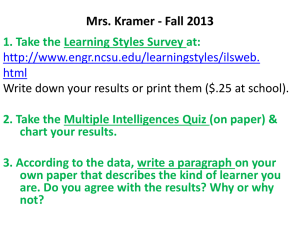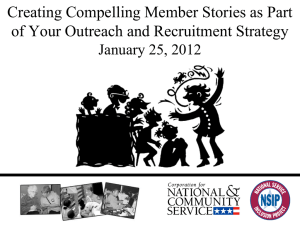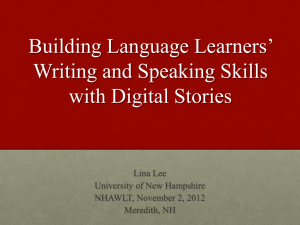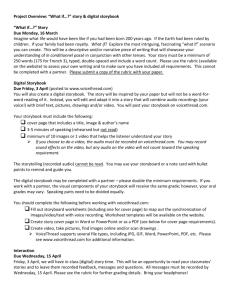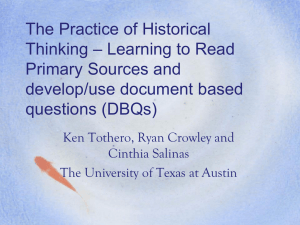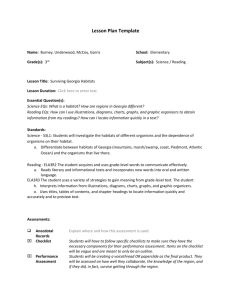VoiceThread Delta Report - Center for Innovative Teaching and
advertisement
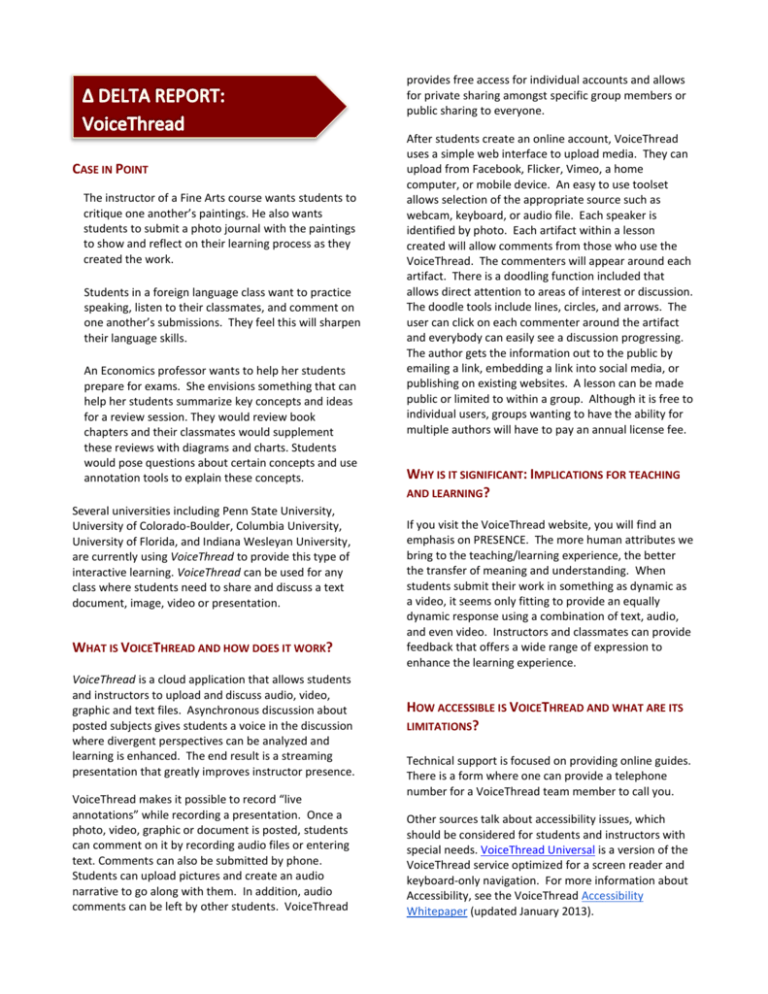
provides free access for individual accounts and allows for private sharing amongst specific group members or public sharing to everyone. CASE IN POINT The instructor of a Fine Arts course wants students to critique one another’s paintings. He also wants students to submit a photo journal with the paintings to show and reflect on their learning process as they created the work. Students in a foreign language class want to practice speaking, listen to their classmates, and comment on one another’s submissions. They feel this will sharpen their language skills. An Economics professor wants to help her students prepare for exams. She envisions something that can help her students summarize key concepts and ideas for a review session. They would review book chapters and their classmates would supplement these reviews with diagrams and charts. Students would pose questions about certain concepts and use annotation tools to explain these concepts. Several universities including Penn State University, University of Colorado-Boulder, Columbia University, University of Florida, and Indiana Wesleyan University, are currently using VoiceThread to provide this type of interactive learning. VoiceThread can be used for any class where students need to share and discuss a text document, image, video or presentation. WHAT IS VOICETHREAD AND HOW DOES IT WORK? VoiceThread is a cloud application that allows students and instructors to upload and discuss audio, video, graphic and text files. Asynchronous discussion about posted subjects gives students a voice in the discussion where divergent perspectives can be analyzed and learning is enhanced. The end result is a streaming presentation that greatly improves instructor presence. VoiceThread makes it possible to record “live annotations” while recording a presentation. Once a photo, video, graphic or document is posted, students can comment on it by recording audio files or entering text. Comments can also be submitted by phone. Students can upload pictures and create an audio narrative to go along with them. In addition, audio comments can be left by other students. VoiceThread After students create an online account, VoiceThread uses a simple web interface to upload media. They can upload from Facebook, Flicker, Vimeo, a home computer, or mobile device. An easy to use toolset allows selection of the appropriate source such as webcam, keyboard, or audio file. Each speaker is identified by photo. Each artifact within a lesson created will allow comments from those who use the VoiceThread. The commenters will appear around each artifact. There is a doodling function included that allows direct attention to areas of interest or discussion. The doodle tools include lines, circles, and arrows. The user can click on each commenter around the artifact and everybody can easily see a discussion progressing. The author gets the information out to the public by emailing a link, embedding a link into social media, or publishing on existing websites. A lesson can be made public or limited to within a group. Although it is free to individual users, groups wanting to have the ability for multiple authors will have to pay an annual license fee. WHY IS IT SIGNIFICANT: IMPLICATIONS FOR TEACHING AND LEARNING? If you visit the VoiceThread website, you will find an emphasis on PRESENCE. The more human attributes we bring to the teaching/learning experience, the better the transfer of meaning and understanding. When students submit their work in something as dynamic as a video, it seems only fitting to provide an equally dynamic response using a combination of text, audio, and even video. Instructors and classmates can provide feedback that offers a wide range of expression to enhance the learning experience. HOW ACCESSIBLE IS VOICETHREAD AND WHAT ARE ITS LIMITATIONS? Technical support is focused on providing online guides. There is a form where one can provide a telephone number for a VoiceThread team member to call you. Other sources talk about accessibility issues, which should be considered for students and instructors with special needs. VoiceThread Universal is a version of the VoiceThread service optimized for a screen reader and keyboard-only navigation. For more information about Accessibility, see the VoiceThread Accessibility Whitepaper (updated January 2013). Although called VoiceThread, there is no actual thread. All the discussions are presented in a linear fashion, making it hard to have a conversation. The users need to be educated to address somebody’s name or user name to make it clear that a certain message is a response to a previous message. GROUP MEMBERS Concerning HTML5, the VoiceThread Website writes, “HTML5 does offer some improvements for certain applications, but it does not offer the features required to deliver the core VoiceThread experience. The most glaring current omission is the inability of HTML5 to access and record from a computer's microphone or webcam. Our philosophy is to continue to offer versions of VoiceThread that maintain the depth of experience for those who will use them, but we will continue to reevaluate technologies like HTML5 and will consider future development once it allows us to offer a fullfeatured VoiceThread platform.” Xiaojing Kou & Roger Crandall Center for Language Technology and Instructional Enrichment Remaining issues include non-textual comment playback that relies on the VoiceThread web application that is rendered in Adobe Flash and overrides user-selected display attributes. There are no alternatives for multimedia presentations. LEARN MORE ABOUT VOICETHREAD VoiceThread has ongoing features and plans that suggest a commitment to growing within the context and “under the watch of” the broader higher education community, as evidenced by: Monthly Google Hangout with Sloan-C Effective Practice Award winner and author of Best Practices for Teaching with Emerging Technologies, Michelle Pacansky-Brock and the VT team. Digital Library for sharing VT projects A formal philosophy and roadmap for accessibility Features on deck: Android App Updated player with more features Web mail service to facilitate 1:1 or small group conversation Previous reports about VoiceThread: Penn State University http://tlt.psu.edu/2009/01/03/hot-team-voicethread/ EDUCAUSE net.educause.edu/ir/library/pdf/ELI7050.pdf Examples of how the VoiceThread can be used: http://www.nccu.edu/knowledgebase/faq.cfm?id=480. Kyle Leach & Madeleine Gonin Center for Innovative Teaching and Learning/CITL Anna Lynch & Maggie Ricci Online Instructional Design and Development Elena Doludenko Slavic Languages and Literatures
